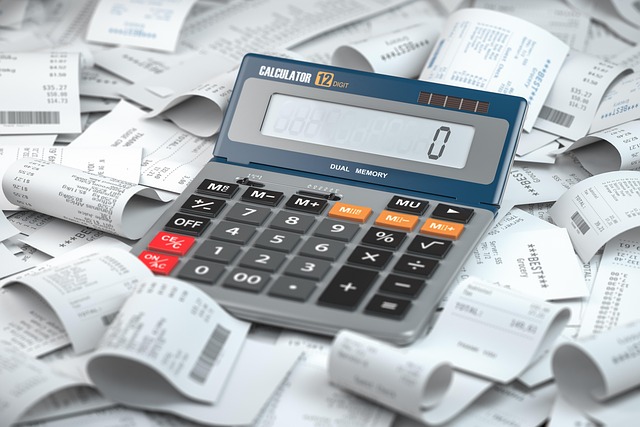Self-builders building new in the UK are exempt from paying Value Added Tax.
VAT for self-builders
Before I go into the details, a few words of caution.
- Be sure to keep on the side of the law throughout. Never pay cash without proper receipts for VAT made out to you. Ideally, never pay cash at all. Keep a very clear paper trail of all your expenditures on the build with credit/debit card statements and cheque book stubs that agree with bank statements.
- Builders working on new buildings should be zero-rated to begin so they shouldn’t charge you VAT on their services. Check your builder’s credentials and that his VAT Registration number is real and up to date. You can do this by taking his name, trading details, address and VAT number and checking the details online.
- Keep detailed records of everything you spend.
- Talk to your accountant about your intentions well before you start the planning and design stages.
- Make sure you are charged the correct amount of VAT as your claim will be invalid if it is not.
-
Get hold of the application form (VAT431NB in the case of a new build, VAT431C in the case of a conversion) and VAT Notice 708 so you can see what’s needed from Day One.
-
Beware when building on to, or re-furbishing, listed buildings. The rules for listed buildings have changed. Previously, VAT on approved alterations could be reclaimed, but as of October 2012, repairs, alterations, and extensions to listed buildings are subject to the full 20% VAT rate.
However, there are exceptions. If you gain permission to demolish everything except the facade or shell of a listed building, the construction work may be treated as a new build, potentially making the VAT reclaimable. This is a complex area with strict guidelines on what’s permitted, so it’s a good idea to consult HMRC before starting any work.
[adrotate banner="58"]
In essence, the good news is that on completion of your project you, as a self-builder, will be able to reclaim most of the VAT paid on materials purchased for your construction. As this can be as much as 5 to 20 per cent of the total build cost it’s quite a few thousand pounds. You must make your claim within the appointed time and in the correct way, forward planning is therefore vital. This is one area of your project that cannot be fudged later.
Records and receipts
Rule one: keep every receipt for absolutely everything – even if it has nothing to do with VAT. Every paid invoice will save you money in the end. Keep all credit notes, bills, invoices, a copy of the planning permission and a copy of the plans of the building. It may seem unnecessary extra effort at a time when you are sorely stretched, but sit down at the end of each day and enter things in your Day Book. Another added benefit is if you ever get into a dispute with someone your records of what was paid (or billed), by whom, to whom and when, can quickly come to your rescue!
VAT records
VAT is charged as an additional percentage on most building materials. This is currently 20 per cent. In reality VAT is a type of purchase tax. For a VAT receipt to be of any value to you (including a hand-written one paid by cash) in your future claim it must show:
- The supplier’s VAT Registration Number
- The amount of VAT that has been paid
- The quantity and nature of the goods supplied
- The price for each item
- Your name and address if the receipt has a value of more than £100
- Everything must be clearly readable, if not, ask for a better copy.
When making your claim at the end of the project, you’ll need to supply originals, not photocopies. I suggest making copies of all receipts very soon after you get them and then keeping these separately from the originals somewhere safe. If you were to lose your stack of receipts you’d be in serious trouble. Building sites can be messy places and it’s easy to put down a receipt only to find it wet and illegible some hours later.
Are all self-builders eligible?
No. The work must be carried out in the UK (but not the Channel Islands), and the building must not have a business use. The DIY housebuilder VAT refund scheme is not for developers, landlords, a property that is to be rented out or a property that is built to be sold on immediately, B&B operators, residential home care operators or membership clubs and associations. If you work from home, though, you can still make a claim for that portion you’ll use as an office.
Nearly all self-builders use tradesmen or even a single Contractor for the work. This is still all allowable under the Scheme. You can also claim for the fitting out of a ‘shell’ bought from a builder or developer. But you can’t claim for work you do to complete a building that is already ‘completed’ by a developer (adding a garage, for example).
Don’t forget that this refund system applies to conversions too, that is if a building was not originally used as a dwelling (such as an old dairy), the Refund is available if it has been unoccupied or unused for ten years or more. To prove a property has been empty for a suitable length of time before you start your work you may have to contact the empty property officer at your local authority. They will write a letter confirming the place has been unoccupied for the appropriate length of time and this will back up your VAT Claim.
Other zero and low rate cases
If a dwelling has been unoccupied for two years or more, and a builder does the work, then he may claim under the 5 per cent band for a renovation project. Also note that some building materials installed in the home are eligible for the lower 5 per cent rate, in particular energy saving items such as heat pumps, solar panels, insulation, draught proofing, etc.
Also know that if you are upgrading a bathroom for mobility purposes it will be zero rated.
Builders can have different VAT ratings. As seen in the introduction a builder creating a new house for you will not charge VAT at all on his services. If he supplies goods that are intrinsic to the house he should not charge you VAT on these either; items such as plug-in appliances and free-standing furniture will be charged at the standard rate.
What building materials can I claim for?
Put simply, those that are ‘incorporated’ into the building itself or the site. They must be fixed and be a part of the structure such that their removal would damage the site or building.
Here’s a short list of things you can claim for:
- Outside: drainage, paths, driveways, fencing, boundary walls,
- Air conditioning
- Burglar alarms
- Fitted kitchen cupboards
- Indoor swimming pools
- TV aerials
- Ventilation
- Curtain poles and rails
- Windows
- Smoke alarms
- Solar panels
- Doors
- Wooden floors
- Fireplaces
- Lifts
- Wiring
- Power sockets
- Built-in vacuum systems
- Solid fuel cookers and oil-fired boilers
- Plumbing installations
- Decorating materials
- Heating systems
- Light fittings
- Turf, plants and trees (if detailed on your planning documents)
- Fitted wardrobes (if a part of the house rather than a demountable kit)
Since 1 January 2021, UK businesses no longer have access to the EU VAT refund portal. Instead, they must use the 13th Directive process to claim VAT refunds for expenses incurred in EU member states. This process involves submitting paper applications directly to the tax authority of the EU country where the VAT was paid. If you import items from non-EU countries you can still claim the VAT but you have to prove you’ve paid it and also show copies of transit and shipping documents.
Businesses established in Northern Ireland can still use the EU VAT refund system for goods-related claims.
If you import items from non-EU countries you can still claim the VAT but you have to prove you’ve paid it, typically using a C79 certificate from HMRC—and retain relevant import and shipping documentation.
You cannot claim for:
- The site. There should be no VAT charged on bare building land anyway. Tell the vendor you intend to build your own place. If the site has some services there could be a small amount of VAT due but it won’t be on the whole value of the site.
- The full VAT refund on conversions. Contractors and builders can charge a reduced VAT rate of 5 per cent on conversions.
- Granny annexes that cannot be used or disposed of separate from the main house. This is because a granny annex is not ‘designed as a dwelling’ from the start.
- Detached workshops, playrooms or enclosed swimming pools; for the same reason as the above point.
- Fitted furniture
- Garden ornaments, ponds, sheds and greenhouses
- Carpets and other floor coverings that can be removed
- Most electrical appliances
- Consumables (sandpaper, paint brushes)
- Any services. For example the professional services of architects, surveyors, designers, planning consultants, project management etc. You also cannot claim for hiring or buying tools and plant, hiring services such as skips/ladders/access/scaffolding etc.
- Extensions. This makes it vital to incorporate that conservatory at the beginning rather than waiting a year or two after you’ve completed your build. If you do, you’ll lose out on the VAT refund on the materials.
When to claim
This should be done at the completion of all the work on the project. This means finishing everything that you’ll ever want to claim on. It makes sense therefore to do as much outside work as you can at the same time as the build, even if it does stretch the budget. Get a claim pack from the Revenue or print off the forms from the website.
It can be hard to know exactly when your build is complete, but it is usually common sense once everything is done according to the original planning documents. You may also get a Certificate of Completion from Building Control. If you are borrowing money this will be essential to get your final payment, or at the very least inform your lender that everything is complete. A letter from them or a Council Tax assessment are also acceptable to the Revenue.
You will have six months from your project completion certificate to submit your VAT reclaim (this was increased from three months in December 2023). In 2023, HMRC also introduced an option to submit claims online rather than only via post. Note that there are different forms to fill in depending on whether your project is a new build (VAT Notice 431NB) or conversion (VAT Notice 431C).
Send in:
- The Claim Form
- A description of the building goods and their quantities
- Other goods/materials and services claimed for
- Your claim calculations
- The VAT invoices and other documents that support your claim
- Evidence that the work has been completed
- A copy of the Planning Permission
- A copy of the plans
When making your calculations, don’t forget to allow for credits or discounts given by your suppliers; returned goods or bulk purchases.
Keep a copy of everything you send just in case the Revenue needs clarification.
Your refund payment will usually come through approximately 30 days after your claim is lodged, provided the Revenue doesn’t need more information on anything.
Note: No matter which way you intend to build, always take professional advice. Also keep abreast of changes in rates and allowances.
[adrotate banner=”14″]





2 Comments